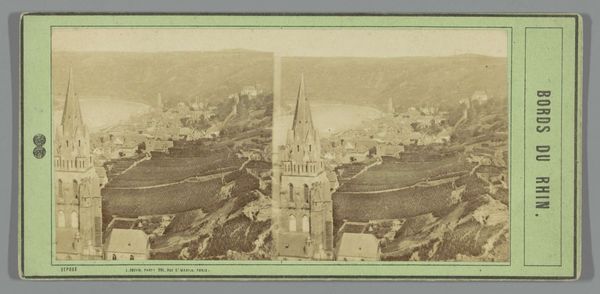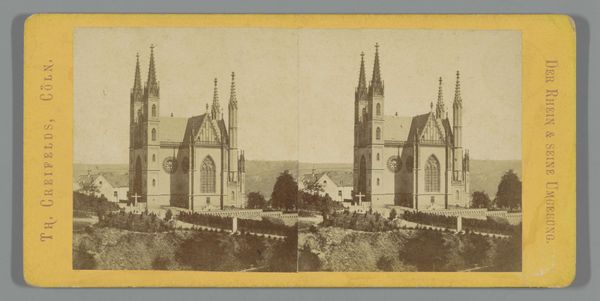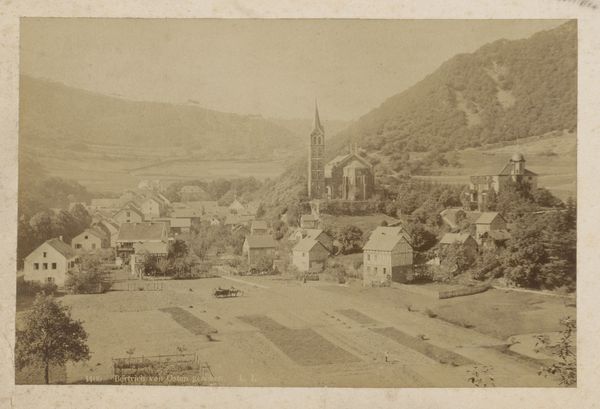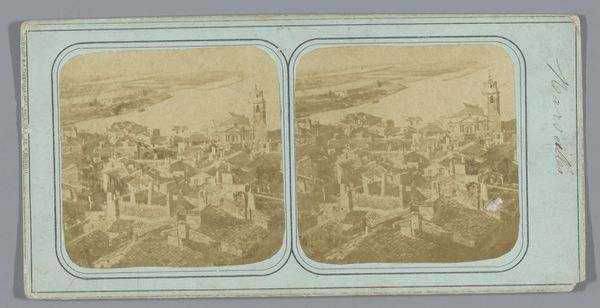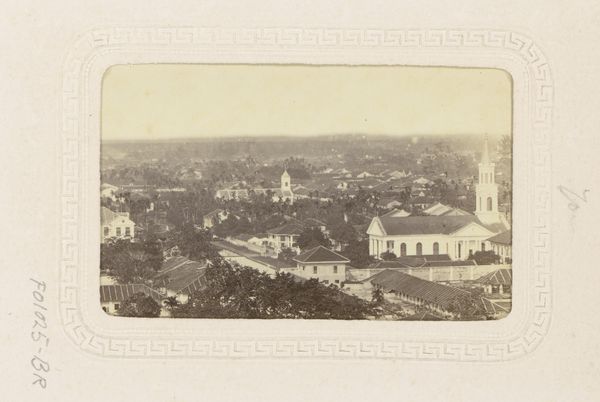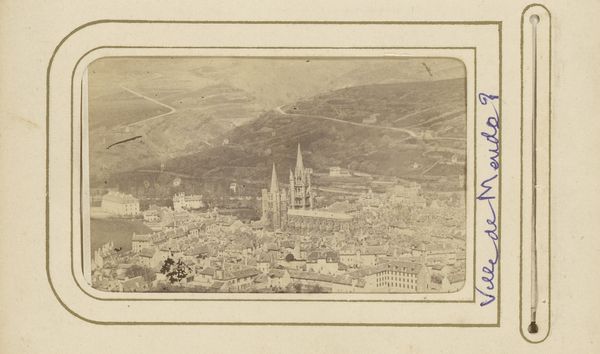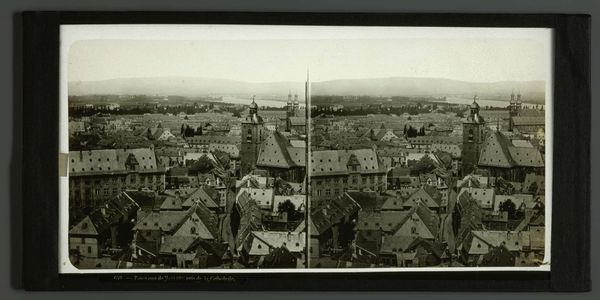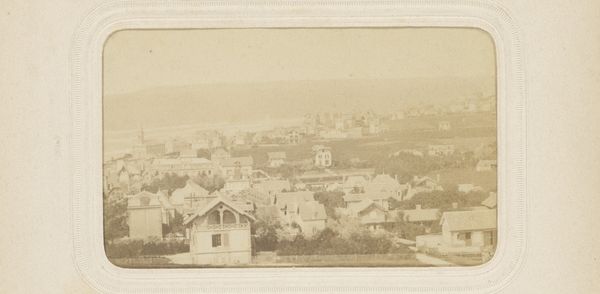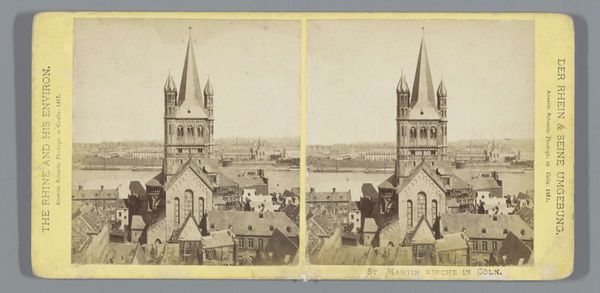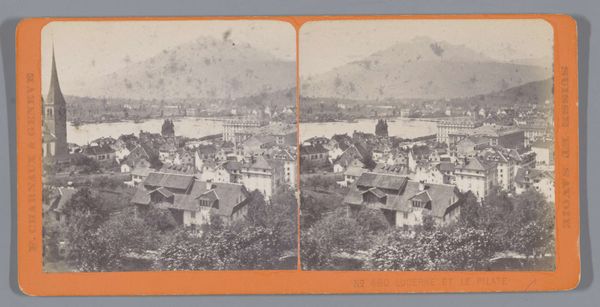
Dimensions: height 85 mm, width 170 mm
Copyright: Rijks Museum: Open Domain
Editor: This gelatin-silver print is "Gezicht op Oberwesel" by Léon Pierre Jouvin, created between 1857 and 1863. It depicts a cityscape, with a large church towering over everything. The light seems soft and muted, creating a dreamy quality. How would you interpret the compositional choices in this photograph? Curator: This image is striking in its strategic organization of visual elements. The stereoscopic presentation offers a notable depth, though subdued in its tonal range. We see the deliberate placement of the church in the foreground; how does this spatial dominance impact your perception of the town? Editor: It makes the church feel both protective and imposing, almost like it’s watching over the whole town. Is that the feeling Jouvin intended to create? Curator: Intention is, of course, beyond our grasp. But we can analyze how the verticality of the church spire, repeated in the reflected stereoscopic image, establishes a compositional rhythm. The placement of the church against the slightly obscured village and the implied curve of the river… what does this contrast evoke for you? Editor: I see how it contrasts built structure with nature, maybe signifying civilization coexisting with its natural setting. Is that the main theme at work here, would you say? Curator: While thematically suggestive, it’s more crucial to observe how Jouvin exploits photography to arrange geometric forms within a limited palette. The medium itself imposes a constraint; how effectively does he manage its challenges in conveying spatial relations? Editor: That's interesting. So it's more about understanding how the artist handled the tools available, more than trying to pinpoint meaning. Curator: Precisely. The photograph itself presents the limits and potential of photographic rendering during its era. An examination of these limits reveals so much about how photography gained acceptance as an art form. Editor: This formalist perspective has opened my eyes to how much I was overlooking by focusing solely on historical context. Now I appreciate Jouvin’s photograph as a masterfully arranged composition.
Comments
No comments
Be the first to comment and join the conversation on the ultimate creative platform.
